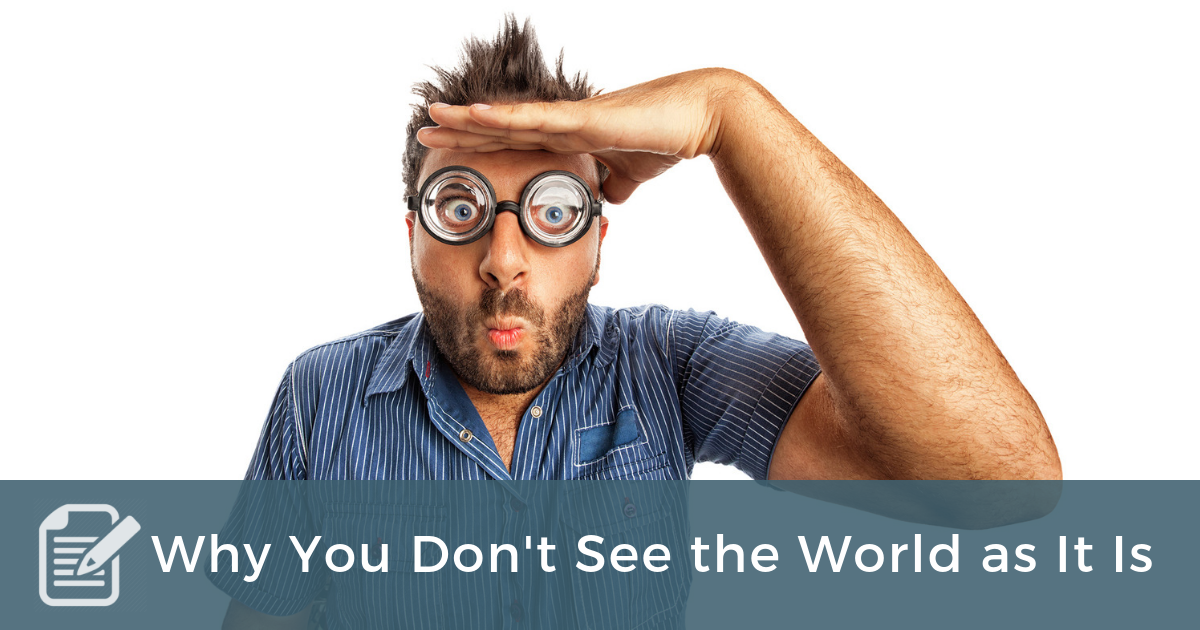 Hopefully by the time this blog goes live the Supreme Court saga here in the United States will be over. If not, I am sorry for us all and I (somewhat) regret bringing our attention to it one more time. While this episode in American politics is far from our finest, it does provide an important lesson to coaches and to everyone: our perspective on the world is warped.
Hopefully by the time this blog goes live the Supreme Court saga here in the United States will be over. If not, I am sorry for us all and I (somewhat) regret bringing our attention to it one more time. While this episode in American politics is far from our finest, it does provide an important lesson to coaches and to everyone: our perspective on the world is warped.
Most of us go through life thinking we see the world as it is. We are wrong. None of us sees things clearly, accurately, or objectively. No matter our IQ, EQ, faith, political persuasion, or values, we are subject to some degree of warped perspective.
The Supreme Court confirmation fiasco is a powerful example of this truth. In polls conducted shortly after the testimonies from Brett Kavanaugh and Christine Blasey Ford, no one was surprised that two-thirds of Republicans believed Kavanaugh while two-thirds of Democrats believed Blasey Ford.
People who observe the exact same data can come to radically different conclusions. Why? Researcher Jonathan Haidt has found that we humans don’t consider the facts and then logically come to a conclusion the way we think we do. Instead, we quickly come to an intuitive conclusion about what is right/wrong and then we sift through the facts for evidence to support our pre-determined conclusion. He calls this “social intuition” and it’s a form of confirmation bias that explains more than just our political divisions.
(BTW, the irony of a “confirmation bias” showing up so strongly in a confirmation process is not lost on me.)
I think of confirmation bias working a bit like a black hole – the more it consumes, the stronger and more consuming it becomes. Because humans are pleasure-seeking creatures, we look for information that confirms what might – at first – be a slight bias. Ah, it feels good to be right! At the same time, we reject data that contradicts our bias. Again, it feels good to be right. The more we hold on to data that supports our bias, the less likely we are to allow contradicting data to have a balancing effect on our bias, thus the bias grows exponentially in both its strength to attract supporting evidence and in its ability to reject, ignore, or dispute contradictory evidence.
What does this have to do with coaching? While we could (and should) focus on preventing our own bias black holes, coaches should also support our clients in taking the uncomfortable journey toward seeing the world more clearly. Client bias shows up in all sorts of ways, including:
- Assumed constraints
- Blind spots
- Relationship dysfunction
- Limiting options
- Unwillingness to re-consider beliefs, values, perspectives
Changing your mind is hard. The more you believe you know something, the more you filter and ignore all information to the contrary. Coaches are here to help clients do the hard thing.
How can we support our clients in overcoming their biases? The most important thing we can do is challenge them. While most people want validation, coaches have to resist becoming a “Yes Man” to our clients. Our job is to help our clients open themselves up to new information, especially when the new contradicts the current. It’s called “growth” and it helps us avoid foolishness.




